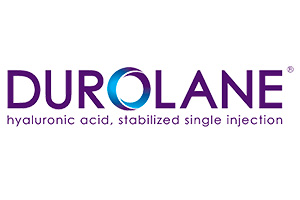As the leading cause of disability among adults, knee arthritis imposes a significant burden on individuals’ daily lives and healthcare systems worldwide. In the field of arthritis management, the search for effective, minimally invasive treatments has long been ongoing, particularly in addressing the debilitating effects of knee osteoarthritis.
Conventional treatments, ranging from medications to surgical interventions, have offered relief to many but are not without limitations, often leaving patients seeking alternative solutions. Today we are going to review new knee injections for arthritis that serve many patients today and keep improving every day.
Arthritis treatment shows fast progress today and provides patients with efficient innovations. In this article, we are giving an overview of injections for knee pain. There are many types that are suitable for different patient cases, even the most complicated ones.
Current Treatment Landscape
Nowadays, the range of injections for symptomatic knee pain involves many types with different active substances and indications for use. Here you will find an explanation of popular types with examples and characteristics of the latest innovations in this sphere of orthopedics.
Please remember that the final decision must be made by your doctor-in-charge. Use this article as your guide in the landscape of new knee injections, acknowledging you with the latest medicine achievements and healing options.
Corticosteroids
Corticosteroid knee injections deliver a potent anti-inflammatory medication directly into the knee joint to alleviate pain and reduce inflammation associated with arthritis. These injections typically contain a corticosteroid medication, such as triamcinolone or methylprednisolone, combined with a local anesthetic, such as lidocaine or bupivacaine.
Mechanism of Action
The corticosteroid component works by suppressing the immune response and reducing the production of inflammatory substances within the joint. This helps to decrease swelling, pain, and stiffness, allowing for improved mobility and function in the affected knee. The local anesthetic provides immediate pain relief, numbing the area temporarily.
Overall, corticosteroid knee injections offer a quick and effective way to manage symptoms of knee arthritis, providing relief for several weeks to months in many patients.
Some treatments even combine corticosteroids with hyaluronic acid — check out Cingal to see how it works.
Hyaluronic Acid
Hyaluronic acid knee cartilage injections, also known as viscosupplementation, involve injecting a gel-like substance into the knee joint. Hyaluronic acid is a natural component of synovial fluid, which lubricates and cushions the joint.
Mechanism of Action
HA injections supplement the naturally occurring HA in the synovial fluid, helping to restore the joint’s lubricating properties. HA knee injections are typically made of a purified form of hyaluronic acid derived from bacterial fermentation or rooster combs. The formulation may also contain saline solution and/or a local anesthetic, such as lidocaine, to ease discomfort during the injection process.
Benefits And Specifics
- HA injections contribute to the overall reduction of knee pain and swelling associated with arthritis, including inflammation stop.
- The newest research suggests that hyaluronic acid injections may stimulate the production of endogenous HA and promote cartilage repair within the joint, although the extent of this effect is still being studied.
There are many different types and concentrations from the lightest (Go-On) to the thickest (Optivisc Single) to serve almost any osteoarthritis case. Check out our article about hyaluronic injections to learn more about them!
Platelet-Rich Plasma
PRP are new injections for knee pain that offer a promising regenerative therapy, harnessing the body’s natural healing mechanisms to promote tissue repair and reduce pain. PRP knee injections are made from the patient’s own blood, with no additional additives or foreign substances.
Mechanism of Action
Platelet-rich plasma (PRP) knee injections involve injecting a concentrated solution of platelets derived from the patient’s own blood into the knee joint. A small amount of the patient’s blood is drawn, typically from the arm. The blood is then processed using a centrifuge machine to separate the platelets from other blood components, resulting in a concentrated solution of platelet-rich plasma.
Finally, the concentrated PRP solution is injected directly into the knee joint, where it releases growth factors and other bioactive proteins.
Benefits And Specifics
- PRP stimulates tissue repair, reduces inflammation, and promotes healing within the knee joint.
- These injections have been shown to provide pain relief and improve function in patients with osteoarthritis.
- Since PRP is derived from the patient’s own blood, there is minimal risk of allergic reactions or adverse effects.
Stem-Cell
Stem cell knee injections involve the injection of stem cells, typically derived from either the patient’s own body (autologous) or from donor sources (allogeneic), into the knee joint to promote tissue repair and regeneration. These injections offer a novel approach to knee arthritis treatment, focusing on tissue repair and regeneration to restore joint health and function.
Mechanism of Action
Once harvested, the stem cells are processed and purified in a laboratory to isolate and concentrate them. The resulting stem cell solution may also be combined with growth factors or other bioactive substances to enhance its regenerative properties.
The concentrated stem cell solution is then injected directly into the knee joint using ultrasound or fluoroscopic guidance to ensure precise placement.
Once injected, the stem cells migrate to the damaged tissues within the knee joint, where they exert their regenerative effects.
Stem cells have the ability to differentiate into various cell types, including chondrocytes (cartilage cells), osteoblasts (bone cells), and synoviocytes (cells lining the joint capsule). This allows them to contribute to the repair and regeneration of damaged cartilage, bone, and other tissues within the knee joint.
Stem cells also secrete a variety of bioactive molecules, such as growth factors, cytokines, and chemokines, which exert paracrine effects on surrounding cells. These signaling molecules modulate the inflammatory response, promote tissue healing, and stimulate the recruitment of endogenous stem cells to the site of injury.
Benefits And Specifics
- Cartilage Repair. Stem cell knee injections hold the potential to repair damaged cartilage and restore joint function in patients with knee osteoarthritis.
- Pain Relief. By promoting tissue regeneration and reducing inflammation, stem cell therapy can alleviate pain and improve mobility in affected individuals.
- Long-term Effects. While more research is needed to fully understand the long-term effects of stem cell knee injections, early clinical studies have shown promising results in terms of pain relief and functional improvement.
Hydrogel
New hydrogel injections offer a minimally invasive treatment option for knee arthritis, providing symptomatic relief by cushioning and lubricating the joint. While more research is needed to fully understand their long-term effects, hydrogel injections represent a promising approach to managing knee osteoarthritis and improving the quality of life for affected individuals.
Mechanism of Action
Hydrogel is a water-absorbing polymer composed of cross-linked chains that form a three-dimensional network capable of holding large amounts of water. Once injected, the hydrogel forms a viscoelastic gel-like matrix within the joint space.
The hydrogel used in knee injections is typically made from synthetic materials, such as polyethylene glycol (PEG) or hyaluronic acid derivatives, although some formulations may contain natural substances.
Benefits And Specifics
- Cushioning. Hydrogel injections provide cushioning and shock absorption within the knee joint, helping to distribute mechanical forces and reduce friction between the joint surfaces.
- Structural Support. Hydrogel may also provide structural support to the surrounding tissues, helping to stabilize the joint and reduce pain associated with knee arthritis.
- Longevity. These treatments provide long-lasting relief, with effects lasting several months to a year or more in some cases. Some formulations gradually degrade over time, releasing bioactive molecules that promote tissue repair and regeneration within the joint.
- Minimal Side Effects. Hydrogel injections are generally well-tolerated, with minimal risk of allergic reactions or adverse effects.
From the potent anti-inflammatory properties of corticosteroids to the regenerative potential of stem cells, new knee joint injections hold unique promise in alleviating pain, improving function, and enhancing the overall quality of life for patients.
While further research is needed to fully elucidate the long-term efficacy of these therapies, the early clinical evidence and patient testimonials paint a promising picture of their potential impact. As researchers continue to explore new injections for knee arthritis and refine existing techniques, the future holds immense possibilities for advancing the field of orthopedic medicine and transforming the lives of millions worldwide.


